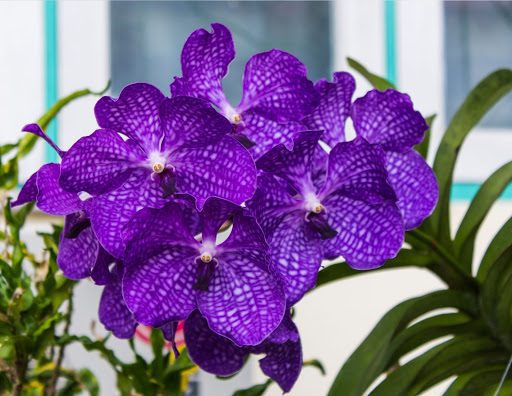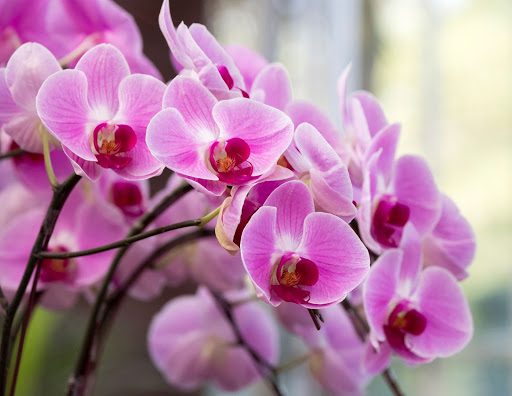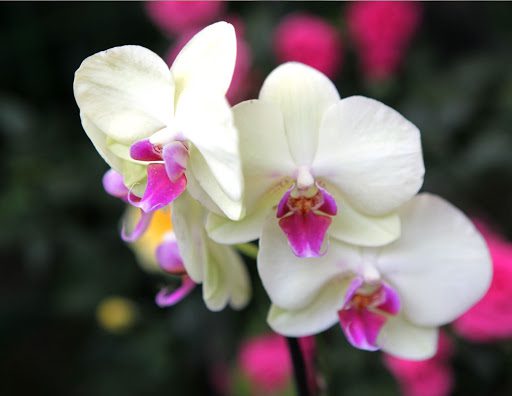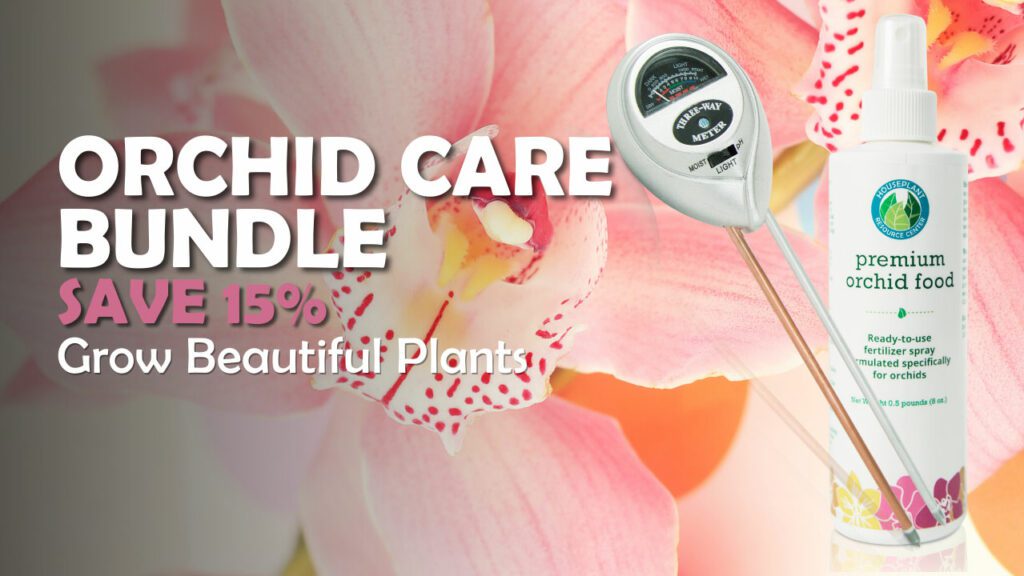Now that you’re head over heels for your orchid, you might be thinking about growing your collection. It’s common for orchid lovers to grow a few plants at the same time since having a variety of ornate blooms is an easy way to brighten a room and add character to your indoor garden.
If you’re considering growing your orchid garden and you’re wondering how to care for more than one orchid plant, then you’re in the right place.
We’re here to share our tried-and-true tips and tricks to keep your orchids happy so you can go from a one-plant grower to a true orchid master in no time.
Below, we cover 7 must-know tips to keep your orchid garden thriving. Add these things to your care routine and watch your orchid garden grow thick green foliage and burst into bloom every bloom season.
Orchid Garden Tip #1: Don’t over-water your plants.
This is perhaps the number-one most important orchid garden growing tip. Keep your orchids watered, but never leave them in a wet growing mix. Even a damp growing mix can encourage root rot, so be sure to water your orchids only when they’re thoroughly dry.
A good rule of thumb is to water your orchids no more than once a week, though different orchid types will require adjustments in watering. For most orchid types, you can water even less during the winter months.
For best results, follow this simple rule: When in doubt, don’t water your orchid.
Professional Tip: You can purchase a moisture meter to easily read the moisture levels of your orchid’s growing mix. This will help take the guesswork out of watering and set you up for orchid-growing success.

Orchid Garden Tip #2: Keep your orchids in optimal light conditions.
Typically, orchids require bright, indirect light to encourage bloom and maintain hearty roots. If you have a variety of orchid types in your garden, however, you’ll want to check the optimal light conditions for each one since some orchids require low light and some require bright light.
Place orchids that enjoy bright light in a south- or west-facing window, and place orchids that enjoy low light conditions in an east- or north-facing window.
Professional Tip: Direct sunlight can easily burn your orchid. To avoid this, you can adjust the window blinds or hang a sheer curtain to diffuse direct sun rays.
Orchid Garden Tip #3: Buy the right pot for each plant.
Usually when you buy an orchid, it comes in a decorative pot without drainage holes. When you get your plants home, you’ll want to move them into proper pots that’ll help them thrive.
A good orchid pot will have plenty of drainage holes, allow for root ventilation, and won’t be too big. Though it’s not always the rule, most orchids enjoy transparent pots since they let sunlight reach your orchids’ roots.
Professional Tip: For more tips on how to choose the perfect pot for your new orchid, click here.
Orchid Garden Tip #4: Provide optimal temperatures for your orchids.
Generally, the optimal temperature for an orchid is between 60-75° Fahrenheit, though most varieties require a drop in nighttime temperature to trigger blooms.
To keep your orchid garden thriving, check the temperature needs of each plant variety before making temperature adjustments.
Professional Tip: You may opt to move some orchid varieties to a cooler room at night, such as a basement, to encourage bloom.

Orchid Garden Tip #5: Use a humidity tray for each orchid.
While it’s true that orchids grouped together will collectively increase the humidity in the air, orchids thrive when placed on humidity trays. To keep your plants happy, place a humidity tray beneath each one.
Professional Tip: You can purchase a humidity tray online or from your local nursery, or you can make your own by placing a handful of pebbles into a dish and setting your plant on top.
Orchid Garden Tip #6: Use a well-draining potting mix.
Tropical orchids are epiphytic plants, meaning they don’t grow in regular soil. Instead of growing like other plants, many orchids grow high off the ground, clinging to the branches of trees.
If you use regular soil or a traditional potting mix for your tropical orchids, you’ll suffocate their roots and accidentally kill your plants.
Terrestrial orchids, though, do grow in regular soil. These orchid species are usually native to the Americas. Try purchasing a terrestrial orchid growing mix for best results.
Professional Tip: You can purchase orchid potting mix or make your own by combining three parts fir bark, one part perlite, and one part sphagnum moss.
Orchid Garden Tip #7: Use an orchid fertilizer regularly.
Whether you’re caring for one orchid or a whole fleet of orchid plants, you should use a reliable orchid fertilizer to nourish your plants and keep them healthy.
The trick is you shouldn’t use just any old fertilizer. Regular fertilizers are too harsh for your orchid’s complex root systems and will burn the delicate inner systems of your orchid.
The right orchid fertilizer will be specifically formulated for your plant’s unique needs and gentle enough so that you won’t risk damaging your orchid.
Professional Tip: Use our Premium Orchid Food to nourish your orchid with an easy-to-use spray formula. Simply spray the Orchid Food on your orchid’s leaves, roots, and potting mix every time you water. Then sit back and watch your plant bloom.
Click here to buy our Premium Orchid Food and start nourishing your orchid today.
A Recap: 7 Tips to Keep Your Orchid Garden Blooming
There you have it! You’ve learned 7 important tips to keep your orchid garden happy and healthy.
Here’s a recap so you can get started caring for your garden today:
- Don’t over-water your plants.
- Keep your orchids in optimal light conditions.
- Buy the right pot for each plant.
- Provide optimal temperatures for your orchids.
- Use a humidity tray for each orchid.
- Use a well-draining potting mix.
- Use Premium Orchid Food to fertilize your plant and keep it healthy year-round.
For continued success, explore our other articles, visit our online shop, and connect with other orchid plant lovers in our Facebook group. There, you’ll find everything you need to know to grow your orchid garden big and strong so you can enjoy your plants for years to come.



